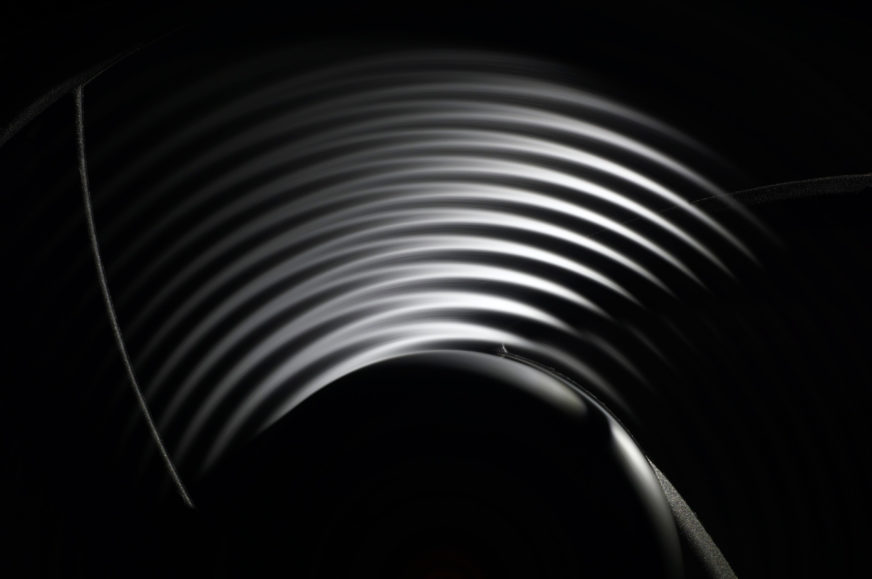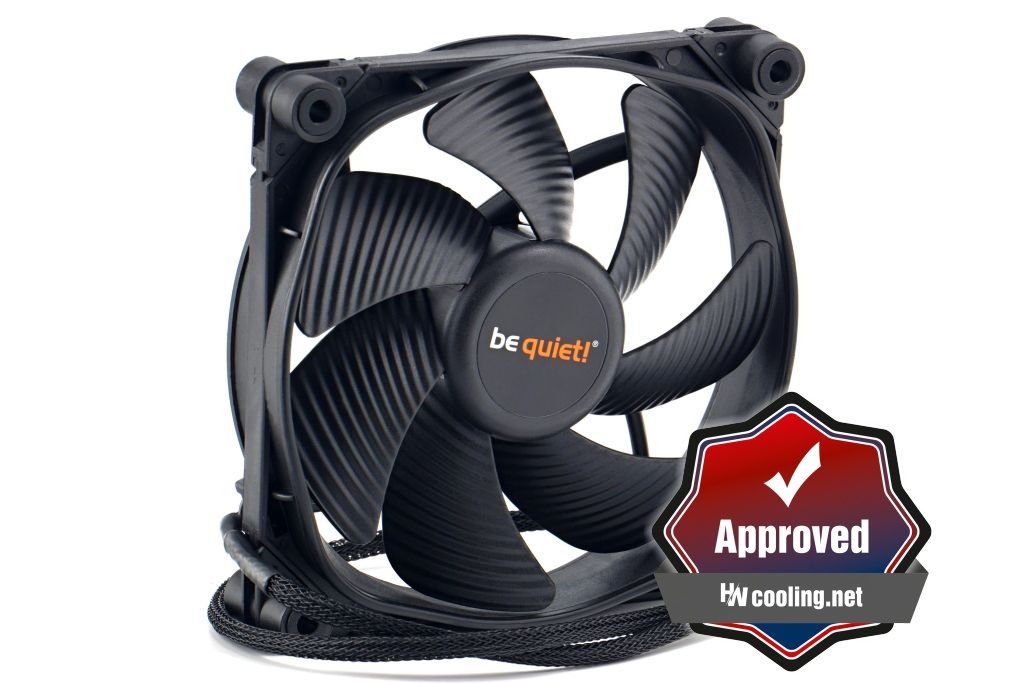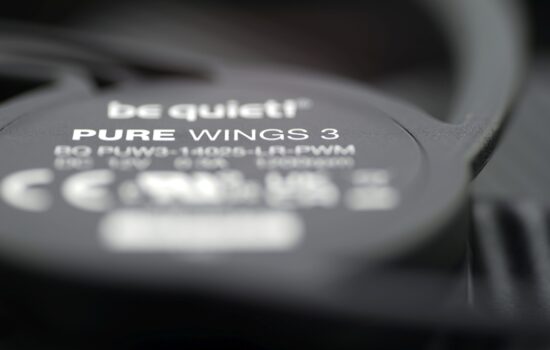Evaluation
It’s heating up. We have added the first triple-A fan to the tests, which has been viewed “some way” for years, and now it will turn out how it is exactly – what are its weaknesses and what are its strengths. Some have also debated whether the Silent Wings 3 happens to be the most efficient fan ever. But as it happens, it’s a bit more complicated than a one-word answer like yes or no.
Evaluation
Despite the fact that the 120-millimeter Silent Wings 3 performs at the top end in certain circumstances, you can see that its aerodynamic design has its best days behind it. The SW3 can only compete with modern rotors like the Gentle Typhoon on radiators at very low speeds (up to about 800 rpm). In such a configuration, it’s even a bit more efficient than a fan like the MSI Silent Gale P12. However, the latter doesn’t really represent a peak of efficiency, and the Silent Wings 3 already lags behind the Noctua NF-A12x25 in everything in terms of aspects of performance.
Always well above average, but at the same time far behind the top, the Silent Wings 3 also holds its own as a system fan. It effectively pushes through dust filters (nylon and plastic), it won’t be stifled by a grille, but the price/performance ratio is average even for high-end fans. And here it should be added for completeness that the efficiency, or the ratio of price to “cooling effectiveness” decreases with higher speeds. Above 1000 rpm it is not a very attractive option even for those radiators. This, by the way, is also because stronger low/rumbly frequencies between 130–160 Hz start to appear in the sound, and at high speed, 320 Hz (“whoooo”) is more intense.
There are more pronounced peaks at low frequencies (100–200 Hz) even with a plastic filter or quite without an obstacle (the fan reaches critical speeds surprisingly quite often, although the intensity of the dominant frequencies tends to be exceedingly low). The most balanced frequencies and the most pleasant sound compared to other fans is paradoxically on the hexagonal grille, where the Noctua NF-P12 (redux) runs into trouble. Overall, however, the acoustic result is noticeably worse than the BeQuiet! Pure Wings 2, which, on the contrary, we praised in this respect.
The vibrations of the Silent Wings 3 (BL066) are extremely low and you can safely put them out of your mind. The rotor axle is robust enough, the rotor balance is flawless, and the above-standard number (6) of stator slots also contributes to the excellent result. In these locations there is less friction and therefore less kinetic energy transfers to the rest of the structure. While we noted in the introductory chapter that there is only a token amount of rubber material on the corners for mounting inside cases, this fan does not need any more.
The very low starting speed (184 rpm) is also worth praising. Of the fans tested, only the SilentiumPC Fluctus 120 PWM started up from lower one. And it’s worth noting that it’s also a particularly economical fan.For Silent Wings 3, we measured the lowest maximum power draw so far, just 0.67 W. Naturally, this is also related to the lower top speed (1500 rpm), but in the optimum rpm spectrum, BeQuiet!’s fan didn’t lose its leading position in airflow per unit of power draw.
Summing everything up, we have to say that it is not a bad fan, but there is no need to grieve for it. Silent Wings 3 is clearly outclassed in all aspects, and it will be interesting to see where BeQuiet! itself goes with Silent Wings 4. It clearly won’t miss the SW3, as it instantly removed it from its product portfolio after the addition of SW4, and at least at the time of writing, all product sheets are unavailable. Silent Wings 3 will thus most likely end up on the discontinued list.
One of the main heroes has finally fallen, but perhaps so that a new, stronger, wiser one can rise in the aftermath… And we hope that Silent Wings 4 will rework the awkward modular corners mounting system. Anyone who has experience with the SW3 knows well how much fun it is to disassemble when a latch snaps in incorrectly.
English translation and edit by Jozef Dudáš
| BeQuiet! Silent Wings 3 (BL066) |
| + Suitable for every use |
| + Cooling efficiency (airflow/pressure per unit of noise) at a very high level |
| + High airflow and static pressure despite obstacles... |
| + ... effectiveness at low speeds (below 850 rpm) is top-notch |
| + Wide speed range |
| + Very low speeds possible (stable from approx. 184 rpm) |
| + Virtually noiseless operation of bearings and motor |
| + Very low power draw (only 670 mW) with high airflow per watt |
| + Extremely low, negligible vibrations |
| + Decent build quality |
| + Interchangeable corners. Ones adapted for mounting on a tower cooler, the other inside a case |
| + Assumption of a very long service life (time-tested bearings) |
| - In certain situations rumbly frequencies (100–200 Hz)... |
| - ... in some cases even more "hum" (at 320 Hz) than competing fans. Especially on radiators |
| - Weaker price/performance ratio even for a higher price class |
| - Really attractive efficiency only in the lower speed range |
| - Often problematic to remove modular corners |
| Approximate retail price: 21 EUR |
- Contents
- BeQuiet! Silent Wings 3 (BL066) in detail
- The basis of the methodology, the wind tunnel
- Mounting and vibration measurement
- Initial warm-up and speed recording
- Base 7 equal noise levels…
- .. and sound color (frequency characteristic)
- Static pressure measurement…
- … and airflow
- Everything changes with obstacles
- How we measure power draw and motor power
- Measuring the intensity (and power draw) of lighting
- Results: Speed
- Results: Airlow w/o obstacles
- Results: Airflow through a nylon filter
- Results: Airflow through a plastic filter
- Results: Airflow through a hexagonal grille
- Results: Airflow through a thinner radiator
- Results: Airflow through a thicker radiator
- Results: Static pressure w/o obstacles
- Results: Static pressure through a nylon filter
- Results: Static pressure through a plastic filter
- Results: Static pressure through a hexagonal grille
- Results: Static pressure through a thinner radiator
- Results: Static pressure through a thicker radiator
- Results: Static pressure, efficiency by orientation
- Reality vs. specifications
- Results: Frequency response of sound w/o obstacles
- Results: Frequency response of sound with a dust filter
- Results: Frequency response of sound with a hexagonal grille
- Results: Frequency response of sound with a radiator
- Results: Vibration, in total (3D vector length)
- Results: Vibration, X-axis
- Results: Vibration, Y-axis
- Results: Vibration, Z-axis
- Results: Power draw (and motor power)
- Results: Cooling performance per watt, airflow
- Results: Cooling performance per watt, static pressure
- Airflow per euro
- Static pressure per euro
- Results: Lighting – LED luminance and power draw
- Results: LED to motor power draw ratio
- Evaluation













I have this fan as a part of the Dark Rock Pro 4 cooler – the front one. The inner fan is disabled for now. Unfortunately, I am thinking about replacing it. What’s driving me completely nuts is the fan start that gives a sound resembling powerful rubbing against a rough surface. It’s okay for folks who want to have the fan running constantly and encounter it only during boot but I want to have a fanless idle – 0 noise, no vibrations, extended fan life, and lower power draw. I wish such behavior was stressed in this and other reviews so that one can find safe alternatives for such requirements.
It’s a pity to encounter such an unexpected drawback, as this fan is much quieter than Arctic P12. At 700 RPM, it’s barely audible in my Nanoxia Deep Silence 8 in the night, and below 500 RPM basically inaudible.
What you are describing is happening with several fans. To an excessive degree with the Strix XF120 as well, where we also mentioned it. I have thought about how to measurably grasp those starts in the context of the interpretation of the results so that a simple comparison across fans is possible, but I don’t know yet.. anyway, it will probably be an initial phase with rotor centering, which is accompanied by higher vibrations in addition to the acoustic expression.
Perhaps the evaluation page can be divided into several labelled subsections, one being dedicated to observations like this for example.
My P14 Slim rev.1 does this initially too, but it’s gone now after I have mounted it tight. Perhaps quality control and tolerance also play a role here?
Maybe we are each talking about a slightly different phenomenon. The initial, let’s say start-up sound of Strix XF120 will certainly not be influenced by the strength of the mounting. With this fan, it’s just that it takes some time (be it very short, in the lower units of seconds) to get centered, and the operational sound is probably a bit different after, let’s say, warming up. I would attribute this purely to the influence of the motor and the bearings. In this case, I would not talk about an issue of a single unit in serial production. Sure, within lower manufacturing tolerances some minor differences in behaviour can be present, but if that feature disappeared completely, I assume it would be due to larger, targeted changes in the design, which for example are solved by various revisions. Unfortunately, most manufacturers don’t talk about them, with a few exceptions (Arctic, for example). So sure, a Silent Wings 3 from the early batches may behave differently than the latest pieces from the current sales. And while we’re on the subject of fan differences from piece to piece, we’ll release one unconventional test in September that will be of interest to you. 🙂
I would rather attribute the different sound after tightening the P14 rev. 2 to vibrations and the fact that with a different mounting there may not be such significant resonance frequencies of the case.